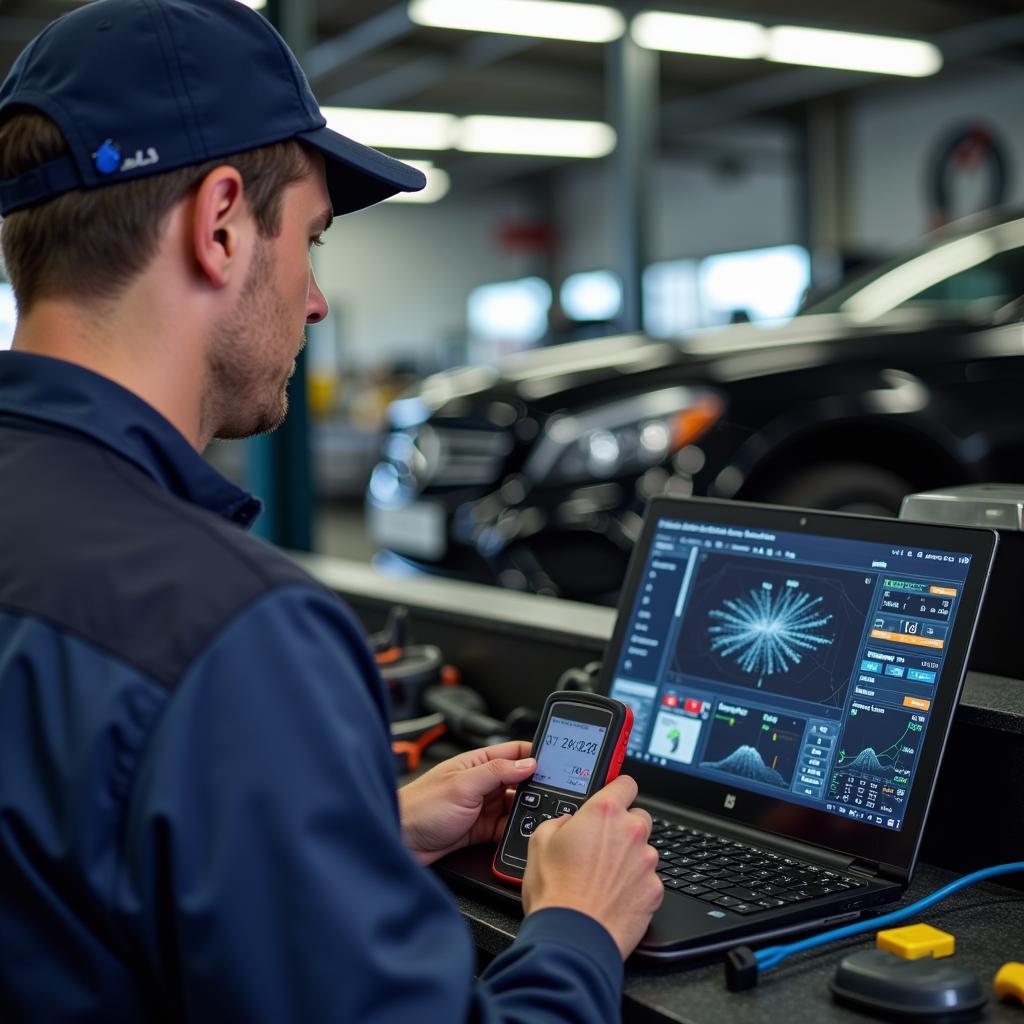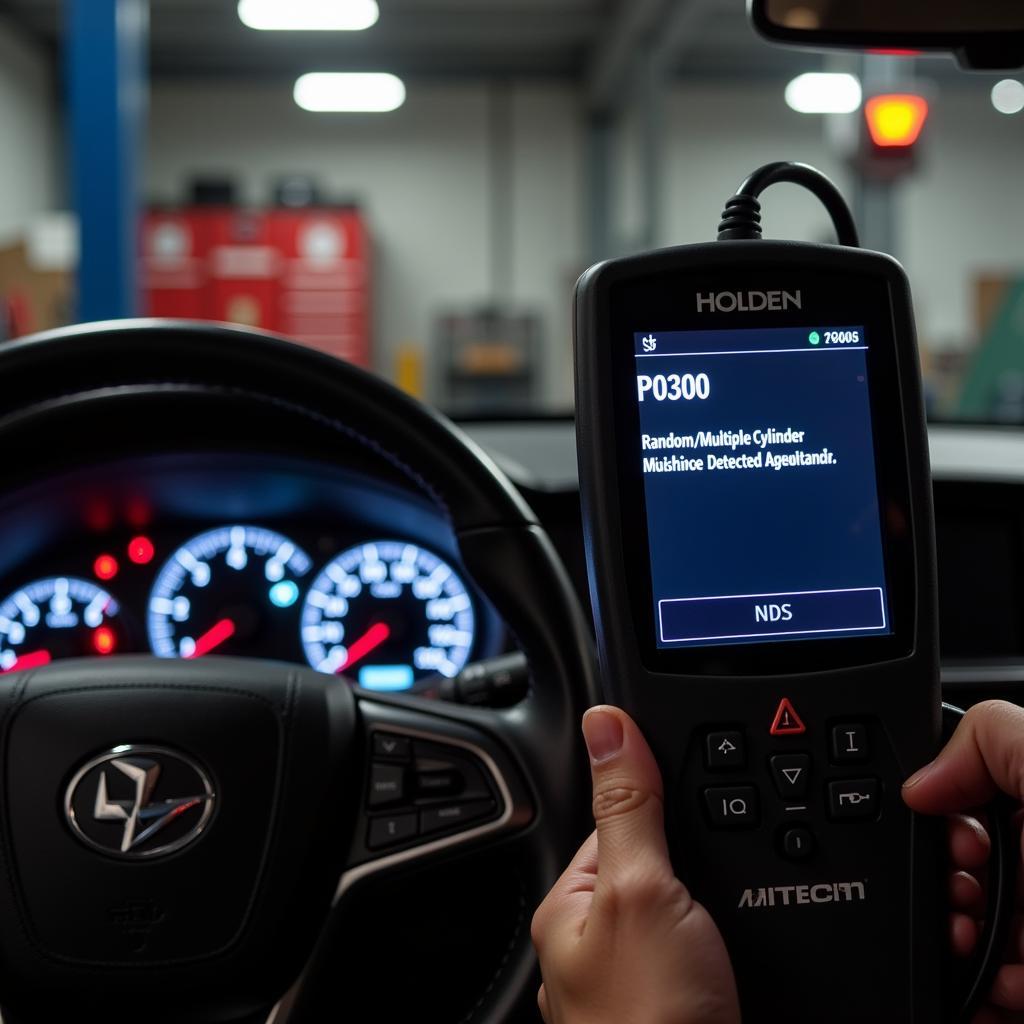A link error message flashing on your OBD2 scan tool can be incredibly frustrating, especially when you’re in the middle of diagnosing a car problem. This error essentially means your scan tool can’t communicate with your car’s onboard computer, leaving you in the dark about potential issues. Don’t worry, you’re not alone! This guide will walk you through the common causes of a “Keep Getting Link Error With Scan Tool” issue and provide practical solutions to get you back on track.
Understanding the OBD2 Link Error
Before we dive into troubleshooting, it’s helpful to understand what a link error signifies. Your car’s onboard computer, also known as the Engine Control Unit (ECU), constantly monitors various systems and stores diagnostic trouble codes (DTCs) when something goes wrong. The OBD2 scan tool acts as a bridge, allowing you to access and interpret these codes.
A link error occurs when this communication bridge fails. It’s like trying to make a phone call where the line is dead – no information can be exchanged.
Common Causes of Scan Tool Link Errors
Several culprits could be behind that persistent link error message. Here are the most common ones:
1. Faulty OBD2 Port or Cable
[image-1|faulty-obd2-port|Faulty OBD2 Port|A close-up image of a damaged OBD2 port on a car, highlighting bent or corroded pins that could be causing a connection issue.]
Your OBD2 port, usually located under the dashboard on the driver’s side, is the physical connection point for the scan tool. Over time, it can accumulate dust, dirt, or even suffer physical damage, hindering the connection. Similarly, a frayed or damaged OBD2 cable can also disrupt communication.
Solution:
- Inspect the OBD2 Port: Check for any bent, broken, or corroded pins. Use a flashlight for better visibility. If you find any debris, use compressed air or a cotton swab dipped in rubbing alcohol to clean it gently.
- Check the OBD2 Cable: Examine the cable for any visible damage, kinks, or loose connections. Consider trying a different OBD2 cable to rule out cable issues.
2. Blown Fuse
[image-2|blown-fuse|Blown Fuse|An image illustrating a blown fuse alongside a good fuse. The blown fuse has a visible break in the internal wire, indicating it needs replacement.]
The OBD2 port receives power from your car’s electrical system through a dedicated fuse. If this fuse blows, the scan tool won’t power on or establish a connection.
Solution:
- Locate the OBD2 Fuse: Consult your car’s owner’s manual to find the location and amperage rating of the OBD2 fuse. It’s usually located in the fuse box under the hood or dashboard.
- Inspect the Fuse: Carefully remove the fuse and check for a visible break in the wire inside.
- Replace if Necessary: If the fuse is blown, replace it with a new one that has the same amperage rating.
3. Software or Compatibility Issues
[image-3|software-update|Software Update|A screenshot of a computer screen showing a software update notification, emphasizing the importance of keeping your scan tool’s software up-to-date.]
Technology evolves rapidly, and your OBD2 scan tool is no exception. Outdated software or compatibility issues between the scan tool and your car’s make and model can lead to link errors.
Solution:
- Update Scan Tool Software: Check the manufacturer’s website for any available software updates for your specific scan tool model. Download and install the latest version if available.
- Verify Compatibility: Ensure your scan tool is compatible with your car’s make, model, and year. Consult the scan tool’s documentation or the manufacturer’s website for compatibility information.
4. ECU Problems
[image-4|ecu-problems|ECU Problems|An image showcasing a car’s engine with the ECU highlighted. A caption could read: “A malfunctioning ECU can disrupt communication with your scan tool.” ]
While less common, a problem with your car’s ECU itself can prevent communication with the scan tool. This could be due to internal faults, water damage, or electrical issues.
Solution:
- Check for Other Electrical Problems: If you suspect an ECU issue, look for other electrical problems in your car, such as flickering lights, malfunctioning gauges, or difficulty starting.
- Consult a Professional: Diagnosing and repairing ECU problems often require specialized knowledge and equipment. If you suspect an ECU issue, it’s best to consult a qualified mechanic or automotive electrician.
Still Getting a Link Error?
can obd ii car scanner tool link error
If you’ve gone through the troubleshooting steps above and are still struggling with a “keep getting link error with scan tool” issue, don’t despair! Here are some additional tips:
- Try a Different Vehicle: Connect your scan tool to another vehicle (if available) to verify if the problem lies with the tool itself or your car.
- Check the OBD2 Protocol: Some scan tools might require you to manually select the correct OBD2 communication protocol for your vehicle. Consult your scan tool and vehicle documentation for guidance.
- Inspect the Cigarette Lighter: In some vehicles, the cigarette lighter socket shares a fuse with the OBD2 port. Ensure the cigarette lighter is functioning correctly.
Conclusion
Experiencing a “keep getting link error with scan tool” message can be a roadblock in your car diagnostics journey. By systematically checking the common culprits – OBD2 port and cable, fuses, software, and ECU – you can often pinpoint and resolve the issue. Remember, a properly functioning scan tool is crucial for understanding your car’s health, so don’t hesitate to seek professional help if you need it.
Need Expert Assistance?
If you’re still facing challenges, the team at ScanToolUS is here to help! Contact us at +1 (641) 206-8880 or visit our office at 1615 S Laramie Ave, Cicero, IL 60804, USA. Our automotive experts are standing by to provide personalized guidance and support.



